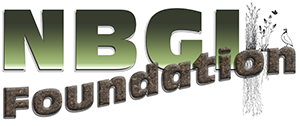Virginia is stepping up its part in the overall national wild bobwhite quail restoration effort with an agreement between two state agencies to target pine forests in the state’s six “bobwhite focus areas” to create habitat for bobwhites and other wildlife, while improving commercial timber value.
 |
The Virginia Department of Forestry, an original member of the Virginia Quail Council, is assisting the Virginia Department of Game & Inland Fisheries, a member of the National Bobwhite Conservation Initiative (NBCI), to identify interested private, non-industrial forest landowners in the 15 counties that comprise the state’s six quail focus areas to embrace forestry best management practices conducive to bobwhites. The practices include both pre-commercial and commercial thinning of pine stands, planting of shortleaf pine seedlings and the use of an approved herbicide in controlling hardwood undergrowth. Approved landowners can earn up to $10,000 in cost sharing for their participation.
While many think of bobwhite quail in an “agricultural” setting, open pine stands, or “savannahs,” have historically been productive locations for bobwhites — as well as rabbits, turkeys, deer and numerous other bird species. Thinning pine stands allows sunlight to reach the ground, which stimulates the growth of native vegetation quail need for food, raising their young and protection from predators. Shortleaf pine is a slow-growing species, so planting it helps keep the pine stand open longer, requiring less maintenance to preserve it as wildlife habitat.
 |
“Most farms in Virginia have more timberland than open farmland,” explained Marc Puckett, the state’s quail coordinator and chair of the National Bobwhite Technical Committee. “With commodity crop prices at all-time highs, landowners are now even less likely to devote that agricultural space to bobwhites. But their woodlands do provide a management option.
“In addition, the management practices we’re supporting for quail in this project are actually good for timber health. So it’s a win for the landowner, a win for the timber and a win for wildlife. We’re fortunate to have a state forestry agency that recognizes and promotes these ideas. We hope the program will prove successful and develop long term support.”
Mike Black, forestry coordinator for the NBCI, enthusiastically endorses the Virginia effort, saying “There is no greater opportunity in the historic range of bobwhite quail for habitat restoration than the forested landscape, and reconnecting forests with quail is one of NBCI’s top priorities. We encourage state forestry entities in all 25 NBCI states to join in examining opportunities for wildlife habitat creation on both public and private forestlands in their respective states.”
Virginia’s bobwhite focus area counties where the landowner offer is valid include Bland, Wythe, Greensville, Southampton, Sussex, Culpeper, Greene, Madison, Orange, Rappahannock, Essex, King and Queen, King William, Halifax and Augusta.
The Virginia wildlife agency provides additional information about managing forests for wildlife at
http://www.dgif.virginia.gov/quail/managing-pines-smaller.pdf and http://www.dgif.virginia.gov/quail/forest-land-habitat-management.asp.






